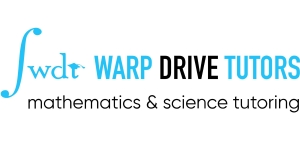Let’s define “doing well” as not only getting an A but doing so without devoting so much of your time to the class that you can’t do equally well in algebra and the rest of your coursework. In other words, how do we study most efficiently for biology? As you may already know, it is a descriptive science and will require a certain amount of memorization. In most biology classes, one does not really encounter problem sets except for the sections on genetics and Hardy Weinberg equilibrium. So there is definitely going to be a fair amount of drilling with the flashcards, but if you really read the textbook carefully, it will make the memorization a lot easier, right? Well, no actually not. In fact let’s consider when and where your textbook will prove useful.
With biology and in fact all math and science classes, it is important to take extensive lecture notes. Much of the lecture material will appear on your tests, so it is a good idea to really know your lecture notes, down to the very last detail. It is worthwhile to ask, then, if one should prepare for lecture. A lot of kids are told to pre-read the lecture material, as pre-reading will make following the lecture a bit easier. It may, but it is not an efficient use of time. Because while the book may cover the lecture material, it also contains a whole lot of superfluous information not focused on in lecture, and which therefore will probably not appear on the exams. Also, the teacher may have their own take on the material and present it a manner entirely differently than the book does. If the lecture serves as the best predictor of test material, why then learn it from a separate source? Let’s take it to an extreme, and say you can get another textbook from the library to pre-read the material for the class textbook. That would seem a bit excessive, and it is. The teacher will lecture on what the class needs to know, and as such lectures are the primary source for information. The textbook is there to refer to if the lecture is confusing or if parts are missed; it is there to reinforce lecture and not as a substitute. So in terms of maximizing time efficiency, students should not pre-read the material in the hope they can then understand lecture more easily. This means they are going to struggle a bit during class, but even if they are struggling to keep up, they should try and write down everything that is said, even if the teacher is speaking rapidly. Every last note, every last detail, and then, as soon as possible afterwards, review and attempt to understand those notes. This is crucial; few kids spend enough time reviewing their lecture notes. If they missed something, they should then refer to the textbook to try and make sense out of it, but the lecture material is what is going to appear on the tests. Lets put this a different way: The teacher spent quite a few hours preparing their lectures, and they are telling the class what they think is important for the class to know. A safe bet is they will include that material on the exam.
But do not totally discount the textbook as mere backup for the 8AM class, likely endured prior to proper caffeination. The textbook often contains pictures and diagrams that are very educational and superbly drawn. When you are memorizing biological processes pictures are generally quite helpful; it is a nearly worthless exercise to try and remember discrete facts outside of a particular frame of reference, and pictures allow you to see, well, the big picture. Just like when you are learning a new language and it is easier to add new words to your vocabulary through conversation, it is always easier to understand and remember discrete facts about cellular organelles within the framework of a particular process. Well-drawn pictures help with this, so look at those pictures. (Disclaimer – we once tutored the daughter of a popular chemistry textbook illustrator so perhaps this is said with some bias). But say your series of lectures in the current unit looks at the secretory pathway of eukaryotic cells. For those of you for which this is but a foggy memory, the secretory pathway involves the packaging of proteins, following gene expression, to a particular compartment within the cell. Or, in some cases as the name implies, the secretion of proteins (such as hormones) from the cell. There are numerous enzymes and organelles involved, depending on where the protein winds up, involving several possible membrane systems. I have seen kids write up flash cards, and memorize the individual organelles with their parents quizzing them. Ugh, the tedium! Learning what the Golgi apparatus is without picturing it in the overall process, without the context of a series of pictures, is a very inefficient way to learn. Look at the pictures and try and envision the general flow of things, and afterwards go the flash card route to memorize the individual structures. And as you study the structure, consider the “term structure/function”, which you hear often in biology because cell structures have evolved over billions of years to take on very specific functions in accordance with their particular roles. So whenever you learn about the structure of something, you should always think of how that structure evolved to have a very specific function, and what that function is, within a particular cellular pathway.
Finally, as with most science classes, there is also an associated lab (experiments, after all, are what make it science.) We have written an entire blog, How to write a great lab report!, that you may wish to have a review. Cheers everyone! Be sure to give us a shout if you have any questions.
